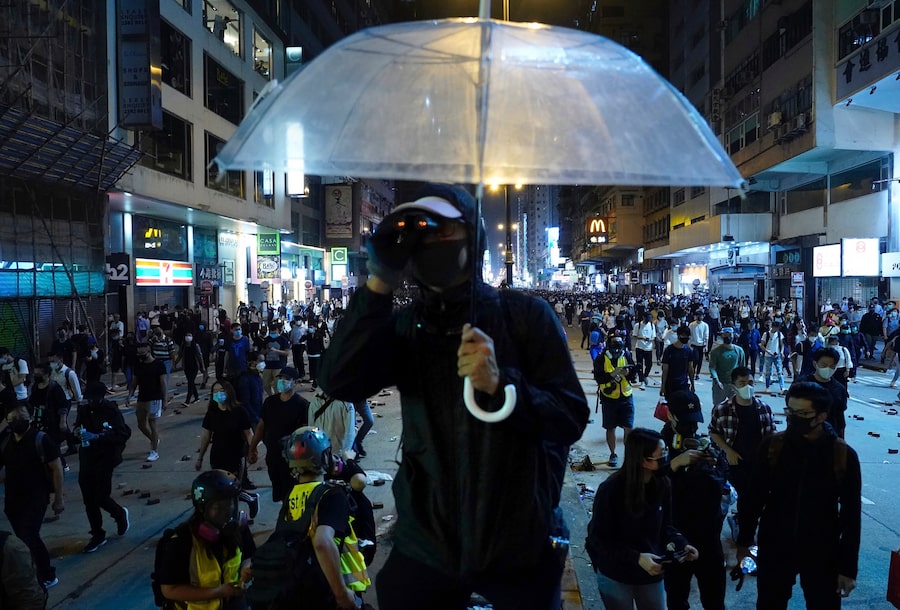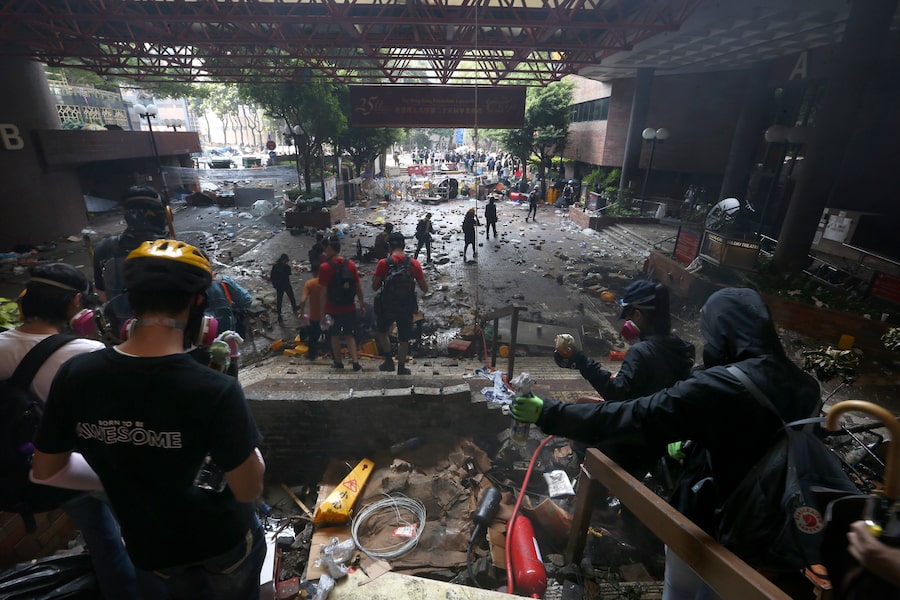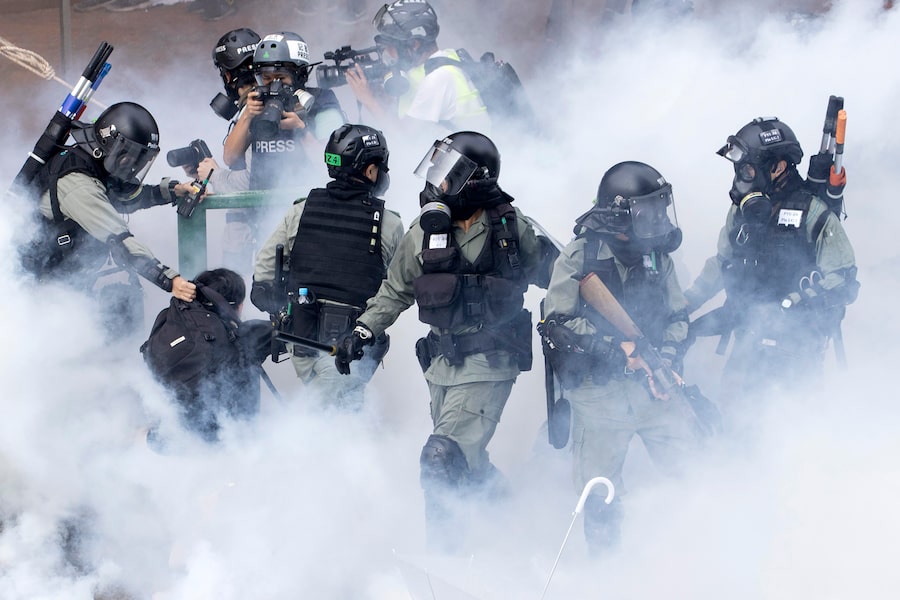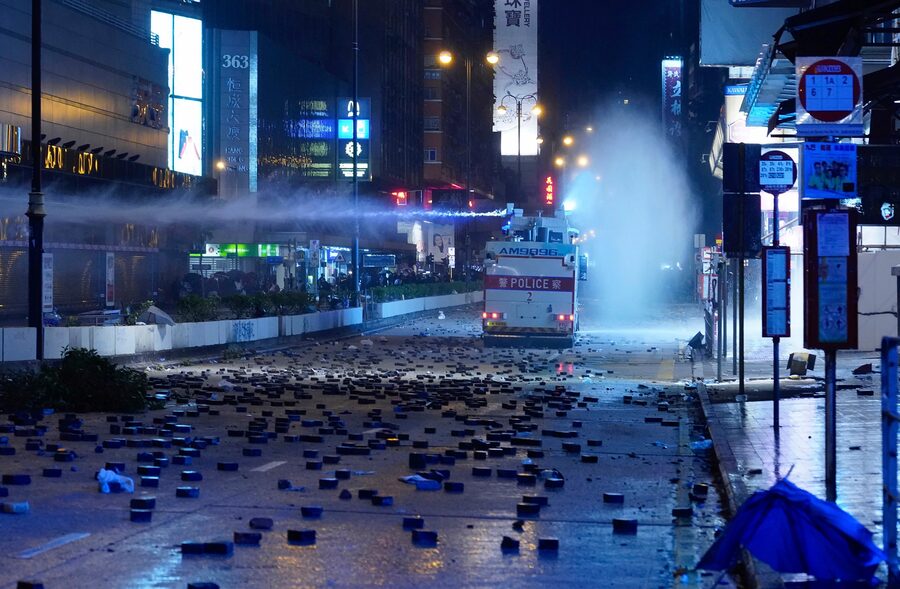An anti-government protester is silhouetted during demonstrations at Tsim Sha Tsui, in Hong Kong, China, on Nov. 18, 2019.ATHIT PERAWONGMETHA/Reuters
Frank Ching is a Hong Kong-based journalist.
The social unrest gripping Hong Kong, now in its sixth month, has worsened: violence reached new heights, universities were taken over by students, protests spread to the heart of the business district and traffic was paralyzed.
Both the government and the protesters are banking on public support. The government hopes that the silent majority will be turned off by protesters’ increasing violence, while the protesters believe that disgust at the government runs so deep that they will retain majority support.
Caught in between is the general public. They are the ones who can bestow legitimacy. But the public is tired of waiting for government action. Increasingly, they are taking matters into their own hands.
At one level, many have decided to clear neighbourhoods of road blocks. Civil society, too, is discussing the way forward for Hong Kong and exploring ways to create dialogue channels.
Chief Executive Carrie Lam ruled out any concessions last Monday when she said, “If there is still any wishful thinking that by escalating violence the Hong Kong SAR Government will yield to pressure to satisfy the so-called political demands, I’m making this statement clear and loud here: that will not happen.”
Having ruled out a political resolution, the government showed no sign of knowing how to tackle the protests, which spread to the financial district last week with women in heels and men in suits taking to the streets. Chief Secretary Matthew Cheung was asked what he thought was the biggest cause of public anger; he responded that he had no opinion poll on hand to explain the reason. Mr. Cheung, like Ms. Lam, still doesn’t get it after 24 weeks of protests.
So, citizens themselves are taking charge, beginning with clearing the streets. This can be hazardous. In fact, a 70-year-old cleaner who attempted to take pictures of a clash between people removing bricks and protesters opposed to such action was struck on the head by a brick Wednesday and died Friday.
Nonetheless, such clearing efforts continued. On Saturday, residents near the University of Hong Kong turned out in force to dismantle barriers set up by protesters and remove bricks from the road. The residents, many of them Westerners, formed a human chain to remove slabs of concrete and large bricks.
Sunday morning, about 100 people started to clear barricades built by protesters near Polytechnic University when several dozen young men in black rushed down from the campus and told them to stop, with some using bricks to back up their demands. Soon the police arrived and asked those clearing the road to leave because “it’s not safe here.” Both sides, it turned out, were preparing for a day-long battle with police attempting to take back PolyU, which by Monday morning was still in the hands of protesters though the tide had clearly turned.
Significantly, outside Baptist University in Kowloon Tong, where Renfrew Road was strewn with debris when occupying students withdrew from the campus, soldiers of the People’s Liberation Army emerged from their nearby barracks to help clear obstacles from the road. Dressed in shorts and T-shirts, they carried brooms and buckets instead of rifles.
The unexpected hour-long appearance of about 50 well-disciplined soldiers was a reminder by Beijing of its military presence. Subsequently, a Hong Kong spokesman said the government had not asked for help and the action was “purely a voluntary community activity.”
On a different level, another group of people who decided not to wait for the government to act held a forum for 500 people at the Hong Kong Exhibition and Convention Centre. It featured international speakers with experience in dispute resolution in countries such as South Africa, Northern Ireland, Nepal, Lebanon, Yemen, Myanmar, Thailand and the Philippines.
The group calls itself the Hong Kong Forward Alliance. Its website describes the organizers as “a group of independent Hong Kong individuals from different walks of life and of different beliefs but bound together by a common desire and commitment to contribute towards constructive change.”
The day-long forum was held Nov. 16, designated by the United Nations as International Day for Tolerance. It was meant to pave the way toward eventual dialogue and conflict resolution but, at least one speaker warned, Hong Kong was not yet ready. A couple of government officials were spotted in the audience. The event was free for anyone who registered.
If citizens’ efforts to lay the groundwork for a dialogue should bear fruit, the government must end its laissez-faire attitude. It must be willing to engage politically in the spheres where progress is possible. The people are now doing the government’s work but, as long as the government remains in place, it will have to play its role.
Keep your Opinions sharp and informed. Get the Opinion newsletter. Sign up today.












